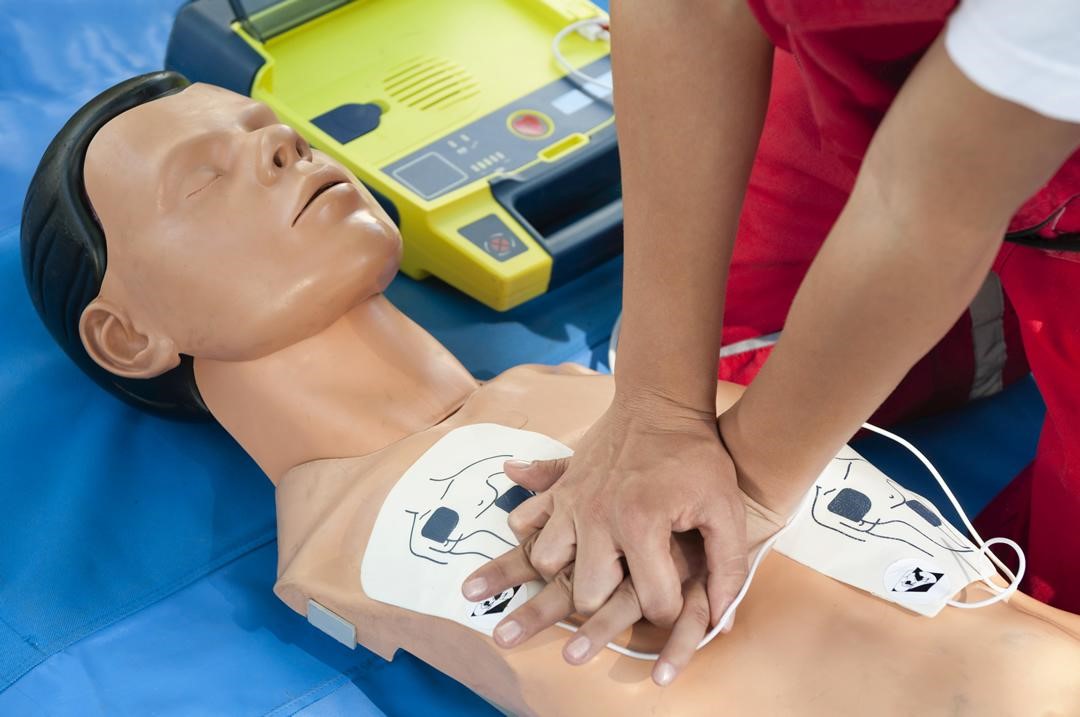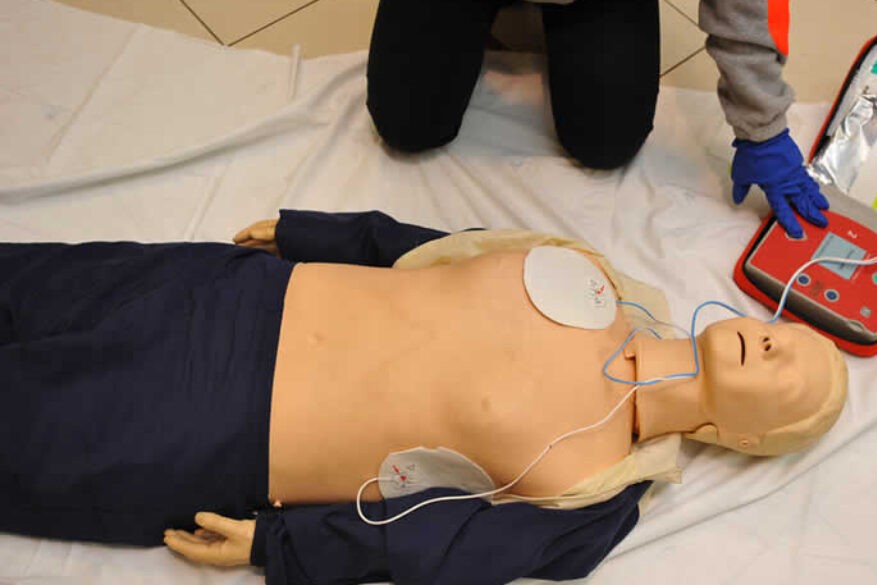
Defibrillators: what is the right position for AED pads?
Public and private places have become littered with an essential and welcome piece of equipment, the defibrillator. But how should AED pads be positioned?
Of course, defibrillators come with simple and detailed instructions, and certainly the operator of the emergency number will know how to guide the citizen in those manoeuvres that are so important in cardiac arrest, but let us look together at one of the first operations of defibrillation, the positioning of the pads.
The positioning of the pads is an extremely important step for successful defibrillation.
QUALITY AED? VISIT THE ZOLL BOOTH AT EMERGENCY EXPO
How to apply the pads of the AED semiautomatic external defibrillator
- Remove the clothing from the patient’s chest. To make it quicker, it may also be necessary to cut them off.
- The two defibrillator electrodes should be placed on the patient’s chest, which should be clean and dry.
- If the victim is wearing metal jewellery or accessories, these must be removed, as they conduct electricity.
- In the presence of a hairy chest, if you have the opportunity, you should shave the chest where the pads will be placed. This is because the presence of too much hair would not make the plates adhere properly to the chest.
- If the person is wearing a bra, this must be removed before placing the defibrillator pads.
Once the paddles have been removed from their casing, they should be connected to the defibrillator (in some models they already are). Then the protective film must be removed from the back.
AED paddles position
Most defibrillators have a picture on the back of the electrodes indicating the precise location on the chest where they are to be applied.
The standard position of the electrodes, called anterolateral, involves:
- The first electrode applied under the right clavicle to the side of the sternum.
- The second electrode in the middle of the middle axillary line at the height of the fifth intercostal space, to the left of the nipple.
However, it is not always possible to place the electrodes in this standard position.
For example, in the presence of pacemakers or bleeding right at the electrode placement site, two alternatives can be used, but they are less effective:
- The latero-lateral position: the two electrodes applied on the side walls of the chest.
- The antero-posterior position: one plate placed on the back, under the left scapula, and the other anteriorly, to the left of the sternum.
For paediatric patients, however, the position of the pads depends on the plates themselves:
- if the defibrillator is equipped with paediatric paddles, then the standard anterolateral position can be maintained.
- If only adult electrodes are available (which are too large for the child’s chest), the paddles must be applied in the antero-posterior position. Then apply one plate on the back (under the left shoulder blade) and the other anteriorly (to the left of the sternum).
Once the pads are applied, the AED defibrillator asks the rescuer not to touch the patient in order to analyse the heart rhythm and detect the presence of abnormalities
During this analysis phase, it is the defibrillator itself that will decide whether or not it is necessary to deliver an electric shock to the heart. The defibrillator can provide two indications: ‘recommended discharge’ or ‘not recommended discharge’.
In the case of a shockable heart rhythm, you will be asked to press the shock button: before delivering the shock, make sure that no one is touching the person suffering from cardiac arrest.
Press for shock and listen to the defibrillator’s instructions, which will eventually ask you to start CPR again until the next analysis (approx. 2 minutes).
In case of a non-shockable heart rhythm, after the analysis the defibrillator gives voice prompts and will eventually ask you to start CPR again until the next analysis (approx. 2 minutes).
Read Also:
Emergency Live Even More…Live: Download The New Free App Of Your Newspaper For IOS And Android
‘D’ For Deads, ‘C’ For Cardioversion! – Defibrillation And Fibrillation In Paediatric Patients
Inflammations Of The Heart: What Are The Causes Of Pericarditis?
Do You Have Episodes Of Sudden Tachycardia? You May Suffer From Wolff-Parkinson-White Syndrome (WPW)
Knowing Thrombosis To Intervene On The Blood Clot
Patient Procedures: What Is External Electrical Cardioversion?
Increasing The Workforce Of EMS, Training Laypeople In Using AED
Difference Between Spontaneous, Electrical And Pharmacological Cardioversion
What Is A Cardioverter? Implantable Defibrillator Overview



